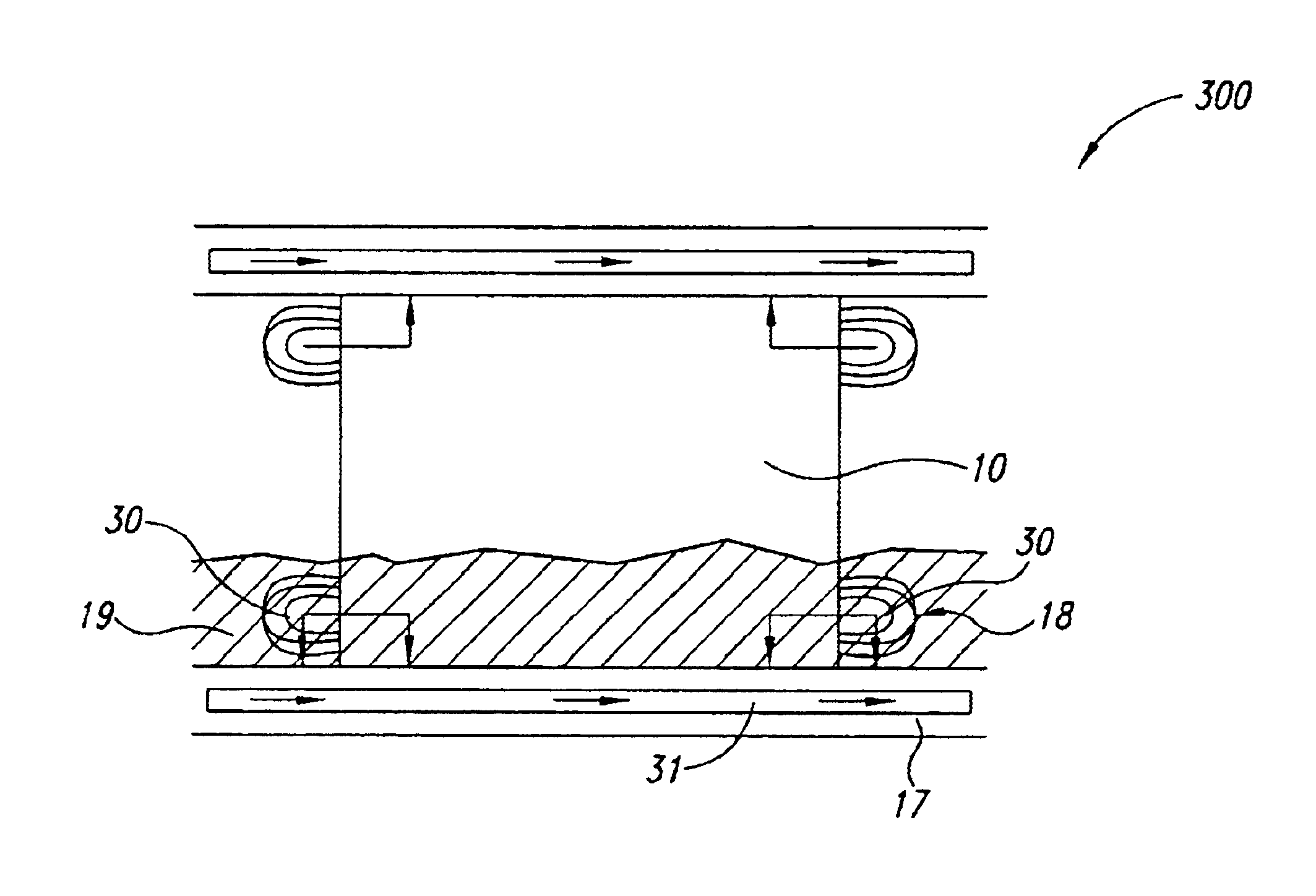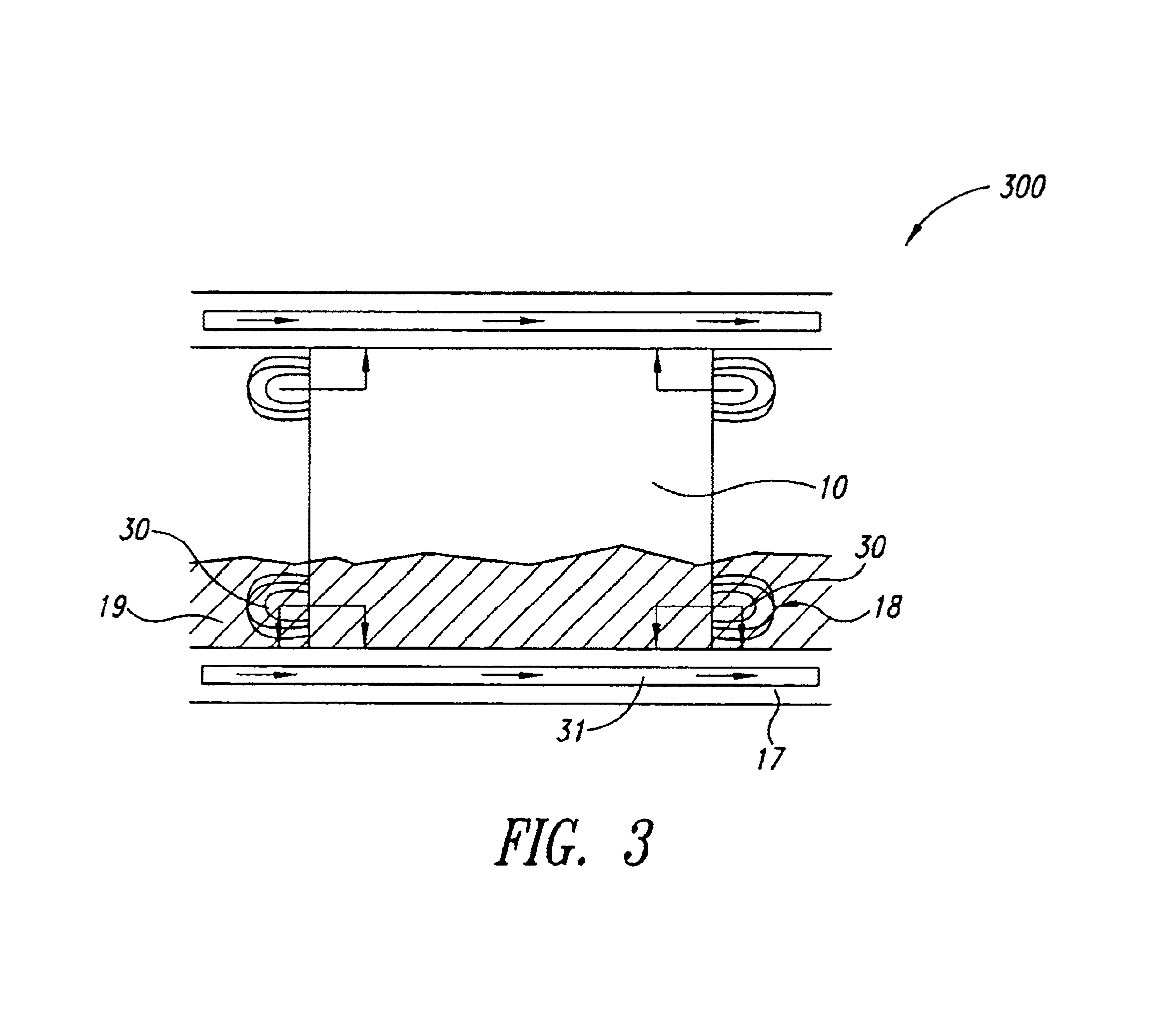Assembly and method for direct cooling of motor end-winding
a technology of end-windings and assembly methods, which is applied in the direction of magnetic circuit rotating parts, lighting and heating apparatus, and magnetic circuit shapes/forms/construction, etc. it can solve the problems of generating heat by mechanical friction and electrical resistance, reducing the thermal resistance of heat paths proximate to electric motor end-windings, and reducing heat paths. thermal resistance, the effect of reducing the thermal resistance of heat paths
- Summary
- Abstract
- Description
- Claims
- Application Information
AI Technical Summary
Benefits of technology
Problems solved by technology
Method used
Image
Examples
Embodiment Construction
[0024]FIG. 1 shows a representation of one embodiment of an electric motor. The motor includes a stator core 10 a rotor 12, a shaft 13 of the rotor 12, and a motor housing 14. The housing 14 is sealed to prevent entry of external contaminants into the motor assembly. The stator core 10 has winding 15 formed by winding a wire 16 around a core with a predetermined electrical specification. The wire 16 may have an enameled coating outside which functions as insulation. Passing an electric current through winding 15 from the outside generates an electromagnetic force which rotates the rotor 12. The rotor 12 may, or may not, include fan blades formed or attached onto the end or ends of the rotor 12. The winding 15 consists of intimately wound wire 16 and maybe impregnated with varnish to avoid flexing. The winding 15 is a differentiator between motor designs, and has a great deal to do with the performance of the motor. The winding 15 is inserted into the steel stator core 10. The core i...
PUM
 Login to View More
Login to View More Abstract
Description
Claims
Application Information
 Login to View More
Login to View More - R&D
- Intellectual Property
- Life Sciences
- Materials
- Tech Scout
- Unparalleled Data Quality
- Higher Quality Content
- 60% Fewer Hallucinations
Browse by: Latest US Patents, China's latest patents, Technical Efficacy Thesaurus, Application Domain, Technology Topic, Popular Technical Reports.
© 2025 PatSnap. All rights reserved.Legal|Privacy policy|Modern Slavery Act Transparency Statement|Sitemap|About US| Contact US: help@patsnap.com



